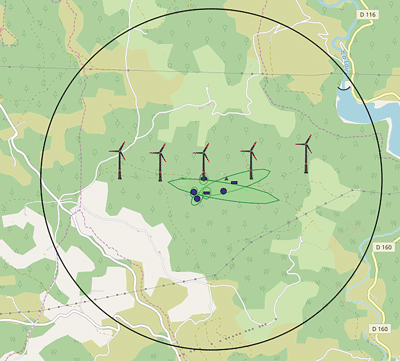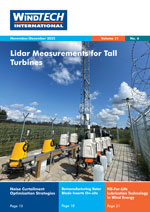 An Evaluation of Lightning Locating Systems to Prevent Risk
An Evaluation of Lightning Locating Systems to Prevent RiskWind farms are known to be particularly exposed during thunderstorms and workers on site are prone to lightning strikes. Thunderstorm warning systems are widely used to prevent lightning related accidents and are already employed in several sectors such as industry, utility networks, leisure activities, transport and civil protection. This article outlines how lightning locating systems can provide an early warning, taking into account the needs of the operators to be notified with a sufficient lead time to apply safety procedures.
By Stéphane Schmitt, Product Manager and Head of Marketing, Meteorage, France










